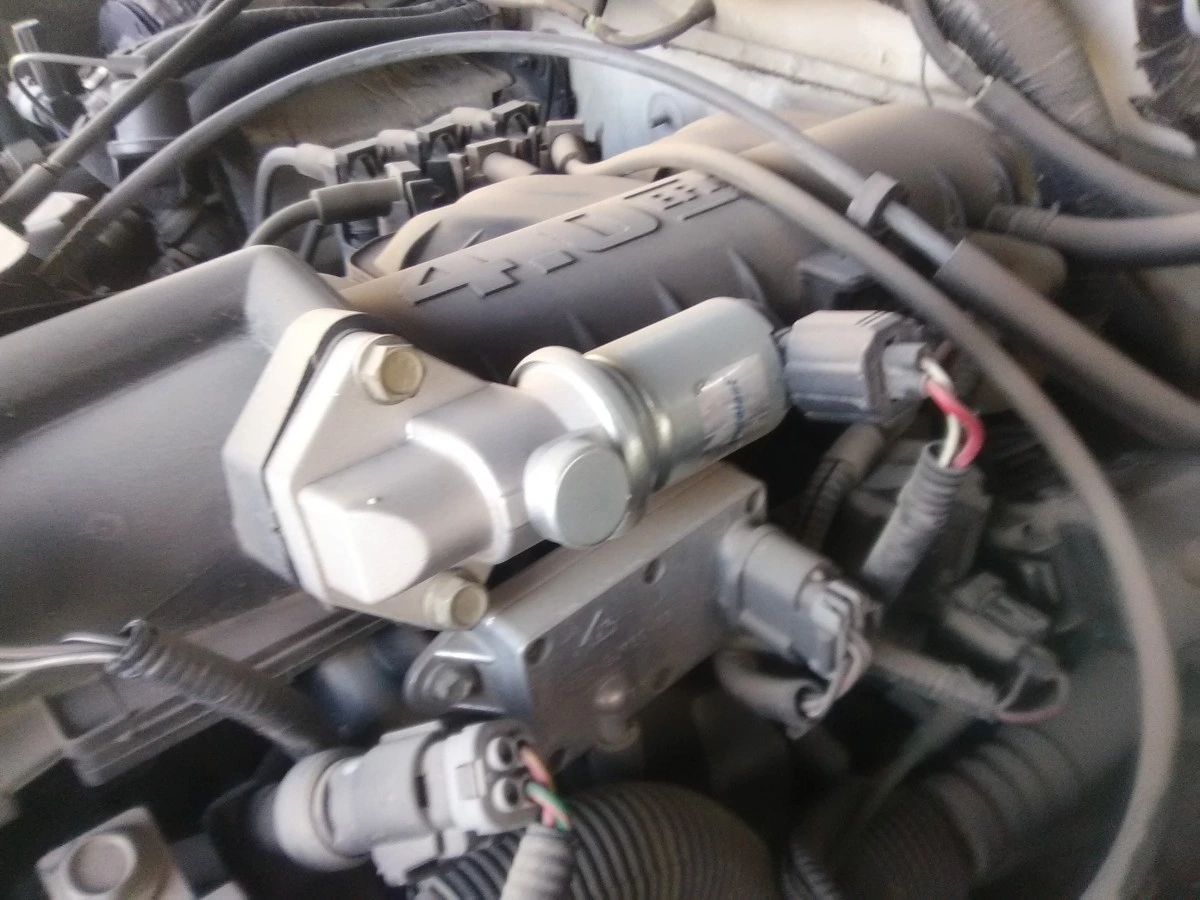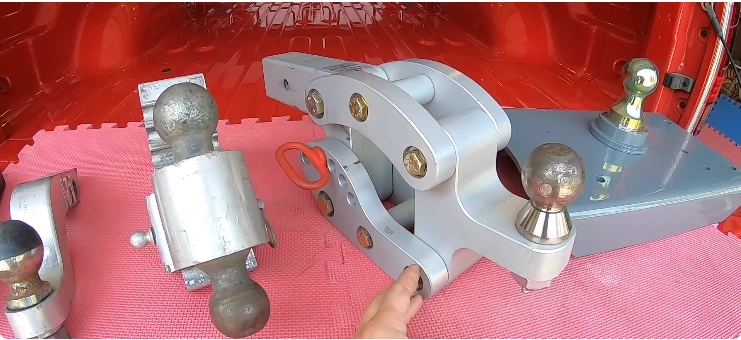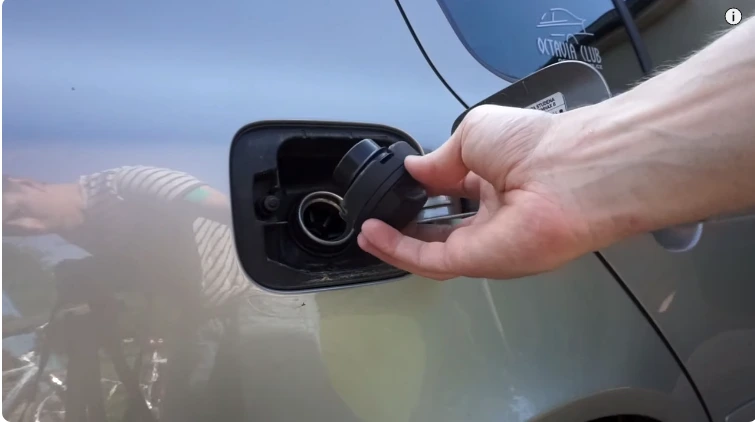Why Does My Car Idle Rough When I Turn On The Ac? (Important To Know)
When the ac is turned on, your car may idle rough due to the increased load on the engine. The added strain from powering the ac compressor can cause the engine to work harder, resulting in a rough idle.
A rough idle can be a frustrating issue for car owners, especially when it occurs only when the air conditioning (ac) is turned on. It is important to understand why this happens so that you can address the underlying problem.
When you turn on the ac, the compressor kicks in and draws power from the engine to cool down the cabin. This additional load on the engine causes it to work harder, which can lead to a rough idle. We will explore the reasons behind this phenomenon and discuss potential solutions to alleviate the rough idle when the ac is running.
Understanding The Relationship Between Your Car’S Idle And Ac
When you turn on the ac in your car, you may have noticed that the engine seems to idle rough. This can be a frustrating experience, especially if you’re trying to enjoy a comfortable ride during the hot summer months.
But why does this happen? In this section, we’ll explore the basics of how your car’s idle works, the role of the ac system, and common symptoms of rough idle when the ac is on.
The Basics: How Your Car’S Idle Works
- The idle speed of your car’s engine is the rotational speed at which it operates when the engine is in neutral or the clutch pedal is not engaged.
- The engine’s idle speed is controlled by an idle air control valve (iacv) or idle speed control valve (iscv), which regulates the amount of air entering the engine.
- When your car is at idle, the engine is not working as hard as it does when you’re driving. It’s in a resting state, ready to respond to your commands.
- The idle speed is set by the manufacturer and is usually around 700 to 900 rpm (revolutions per minute). However, it may vary depending on the make and model of your car.
The Role Of The Ac System: Its Impact On The Engine’S Idle
- When you turn on the ac, it places an additional load on the engine. The ac compressor requires power from the engine to function properly.
- To meet this increased demand, the engine compensates by adjusting its idle speed.
- The engine control unit (ecu) detects the additional load from the ac system and signals the iacv to increase the amount of air entering the engine.
- The iacv opens wider to allow more air into the engine, maintaining a stable idle speed even with the ac running.
- However, sometimes the engine struggles to maintain the desired idle speed when the ac is on, resulting in a rough idle.
Common Symptoms: Identifying Rough Idle When The Ac Is On
- Vibrations: You may feel excessive vibrations while the engine is idling, especially when the ac is running. This can be felt through the steering wheel, dashboard, or even the entire body of the car.
- Fluctuating rpm: The engine’s revolutions per minute (rpm) may fluctuate, going up and down sporadically instead of maintaining a steady idle speed.
- Stalling: In some cases, the engine may even stall when the ac is on. This is more likely to happen if the rough idle is severe and the engine struggles to cope with the additional load from the ac system.
- Reduced power: You may notice a decrease in engine performance or power output when the ac is running, indicating that the engine is under stress.
Remember, while a slight increase in idle speed when the ac is on is normal, a rough and unstable idle should not be ignored. It’s important to have your car inspected by a qualified mechanic to diagnose and address any underlying issues that may be causing the rough idle.
Causes Of Rough Idle When The Ac Is On
When you turn on the ac in your car, you expect a cool and comfortable ride. However, if your car starts to idle rough when the ac is on, it can be quite frustrating. There are several potential causes for this issue, so let’s explore them further:
Insufficient Compressor Power: Inadequate Ac Power Affecting The Engine’S Idle
- Insufficient power from the ac compressor can put a strain on the engine, causing it to idle rough when the ac is on. Some possible reasons for this could be:
- A worn-out or faulty compressor belt: A loose or damaged belt can result in reduced ac power, leading to a rough idle.
- Low refrigerant levels: Inadequate refrigerant levels can cause the compressor to work harder, impacting the engine’s idle quality.
- Malfunctioning compressor clutch: If the compressor clutch is not engaging properly, the ac power may be insufficient, leading to a rough idle.
Clogged Air Filters: Restricting Airflow And Causing Rough Idle
- Air filters are essential for maintaining clean air intake in the engine. However, when they become clogged, they can restrict airflow and result in a rough idle. Here are some factors that can cause clogged air filters:
- Accumulated dirt and debris: Over time, air filters can become clogged with dirt, dust, and other particles, limiting the air supply to the engine.
- Failure to replace filters regularly: Neglecting to change air filters at recommended intervals can lead to excessive clogging and affect the engine’s idle when the ac is on.
Malfunctioning Idle Control Valve: Its Impact On Idle When The Ac Is On
- The idle control valve plays a crucial role in maintaining the engine’s idle speed. A malfunctioning valve can disrupt the balance between air and fuel mixture, leading to a rough idle when the ac is turned on. Here are some potential causes of a faulty idle control valve:
- Carbon buildup: Over time, carbon deposits can accumulate in the idle control valve, affecting its performance and causing rough idling.
- Electrical or mechanical issues: Faulty wiring or a mechanical malfunction can prevent the idle control valve from operating properly, resulting in a rough idle.
By understanding these common causes of rough idling when the ac is on, you will be better equipped to address the issue and ensure a smoother and more comfortable driving experience. Remember to consult a qualified mechanic if you are uncertain about diagnosing or fixing the problem yourself.
Investigating The Ac System
When your car starts to idle rough after turning on the ac, it can be quite frustrating. To understand why this happens, we need to delve into the intricate workings of the ac system and how it interacts with the engine idle.
Let’s explore the key points:
Ac System Components: Understanding The Interplay With Engine Idle
- Compressor: The ac compressor is responsible for pressurizing the refrigerant, which cools the air before it enters the cabin. When the ac is engaged, the compressor places an additional load on the engine, affecting the idle speed.
- Idle control valve: The idle control valve regulates the airflow to the engine during idle. When the ac is turned on, the valve compensates for the increased load by allowing more air to enter, maintaining a stable idle.
- Throttle body: The throttle body controls the amount of air that enters the engine. When the ac system is activated, the throttle body may open slightly to provide the additional air required, which can impact the idle quality.
- Engine control unit: The engine control unit (ecu) processes signals from various sensors to manage engine performance. When the ac is switched on, the ecu adjusts the engine’s idle speed to prevent stalling and ensure smooth operation.
Diagnosing ac system issues: ensuring your ac is not the culprit
Before assuming that the rough idle is solely due to the ac system, it’s important to rule out other potential culprits. Consider the following points:
- Vacuum leaks: Vacuum leaks in the engine can cause rough idle. Check for cracked hoses or loose connections that may be affecting the overall engine performance.
- Dirty air filters: A clogged air filter can restrict airflow to the engine, leading to rough idling. Regularly inspect and replace air filters to maintain optimal performance.
- Spark plugs and ignition system: Worn-out spark plugs or an inefficient ignition system can lead to misfires and rough idle. Ensure that these components are in good condition and functioning properly.
- Fuel system issues: Problems with the fuel system, such as a clogged fuel injector or fuel filter, can impact idle quality. Regular maintenance and cleaning can help prevent these issues.
Seeking professional help: when to involve a mechanic in diagnosing rough idle
If you’ve inspected the ac system and ruled out other potential causes, it may be time to involve a mechanic. Here are a few indicators that it’s best to seek professional assistance:
- Persistent rough idle: If the rough idle persists even after checking the ac system and other potential causes, a trained mechanic can perform a more in-depth diagnosis.
- Advanced ac system troubleshooting: Ac system repairs can be complex. If you’re unfamiliar with the intricacies of the system or lack the necessary tools, it’s best to leave it to a professional.
- Warranty coverage: If your vehicle is still under warranty, involving a mechanic ensures that any necessary repairs are carried out by authorized personnel without voiding the warranty.
Remember, a rough idle when the ac is turned on can have various underlying causes. Investigating the ac system, checking other potential issues, and involving a professional when needed will help ensure a smooth and comfortable driving experience.
Maintaining Your Car’S Ac And Preventing Rough Idle
Regular Ac System Maintenance: The Importance Of Upkeep
Maintaining your car’s ac system is crucial for preventing rough idle when the ac is turned on. By regularly performing these simple maintenance tasks, you can ensure your ac system functions efficiently and smoothly:
- Keep the ac system clean: Regularly inspect and clean the air filters to prevent any dirt or debris from clogging the system. Clean filters allow for better airflow, reducing the strain on your engine when the ac is running.
- Check refrigerant levels: Insufficient refrigerant levels can cause your ac system to work harder, leading to rough idling. Consult your owner’s manual or visit a professional to inspect and top up the refrigerant if necessary.
- Inspect the condenser: The condenser is responsible for cooling down the refrigerant before it circulates back into the cabin. Ensure that the condenser is clean and free from obstructions, such as leaves or debris, which can hinder its efficiency.
- Test the ac compressor: The ac compressor is a vital component that pressurizes and circulates the refrigerant. Regularly check its functionality and lubrication to avoid any strain on your engine.
Preventive Measures: Tips For Avoiding Rough Idle When The Ac Is On
Preventing rough idle when the ac is on requires some proactive steps on your part. Here are some preventive measures to follow:
- Warm-up the engine: Before turning on the ac, let your engine warm up for a few minutes. This allows the engine’s components to reach their optimal operating temperature, reducing the strain caused by sudden ac activation.
- Limit ac usage at idle: When stationary or in heavy traffic, consider turning off the ac temporarily to reduce the load on the engine. Roll down the windows or use the car’s vent system instead.
- Use recirculation mode: Switching your ac to recirculation mode prevents your car from continuously cooling incoming hot air. This mode helps maintain a consistent cabin temperature and reduces strain on the ac system.
- Optimize electrical load: Minimize the use of other electrical components, such as headlights, audio systems, or charging devices, when the ac is on. This reduces the strain on the battery and alternator, ensuring efficient operation.
Consulting The Owner’S Manual: Manufacturer Recommendations For Ac Usage
Every car owner’s manual provides valuable insights and specific recommendations from the manufacturer regarding ac usage and maintenance. Consult your owner’s manual for guidelines pertaining to your vehicle’s ac system. Some common recommendations include:
- Ac system break-in period: Newly installed or repaired ac systems may require a break-in period for optimal performance. Manufacturers often suggest operating the ac system for a minimum amount of time to stabilize its functionality.
- Optimal temperature settings: The owner’s manual may provide recommendations on the best temperature settings to balance comfort and ac system efficiency. Following these guidelines can help prevent rough idle situations.
- Maintenance schedule: The manual may outline specific maintenance tasks and intervals for your car’s ac system. Adhering to these guidelines will ensure that your ac functions reliably and minimizes the chance of rough idle issues.
Remember, regular ac system maintenance, preventive measures, and adhering to manufacturer recommendations are key to preventing rough idle when your car’s ac is turned on. By taking these steps, you can enjoy a comfortable drive without any inconvenience.
Maximizing Comfort And Performance
Ensuring Optimal Engine Performance: The Benefits Of A Smooth Idle
A smoothly idling engine not only contributes to a pleasant driving experience but also ensures optimal engine performance. Here are the key points to consider:
- Reduced vibrations: A smooth idle minimizes vibrations, leading to a more comfortable ride for both the driver and passengers.
- Enhanced fuel efficiency: When your engine idles smoothly, it operates more efficiently, resulting in improved fuel economy.
- Extends engine life: Rough idling can put unnecessary stress on engine components. A smooth idle reduces wear and tear, prolonging the life of your engine.
- Improves acceleration: A properly idling engine responds better to throttle inputs, providing smoother and quicker acceleration.
Achieving A Comfortable In-Car Environment: Enjoying Your Ac Without The Rough Idle
Controlling the temperature inside your car is essential for a comfortable journey. However, you may notice a rough idle when turning on the ac. Consider the following points to maintain comfort:
- Ac load on engine: When the ac is turned on, the engine has to work harder to power the ac compressor. This additional load can sometimes result in a rough idle.
- Regular ac maintenance: Routine maintenance of your car’s ac system, including cleaning or replacing the cabin air filter, can prevent airflow restrictions and ensure smooth operation.
- Consider using recirculation mode: Switching your ac to recirculation mode can reduce the strain on the engine by recirculating already cooled air, minimizing the rough idle.
- Engine performance inspection: If you frequently experience a rough idle when ac is activated, have your engine inspected by a professional technician to identify any underlying issues.
Holistic Vehicle Maintenance: The Correlation Between Overall Vehicle Health And Ac Performance
Maximizing your comfort during ac operation goes beyond just addressing the rough idle. Here’s how overall vehicle maintenance plays a role:
- Proper engine maintenance: Regular engine maintenance, including oil changes, spark plug replacements, and air filter cleanings, can improve overall engine performance and indirectly impact the idle when ac is on.
- Cooling system check: A malfunctioning cooling system can affect the performance of the ac system and potentially lead to a rough idle. Ensure your vehicle’s cooling system is inspected and maintained as per the manufacturer’s recommendations.
- Addressing vacuum leaks: Vacuum leaks can disrupt the ideal air-to-fuel ratio, potentially causing the engine to idle rough when the ac is activated. Identifying and repairing any vacuum leaks is crucial for a smooth idle and optimal ac performance.
- Battery health: The ac system, especially during hot weather, puts additional strain on the vehicle’s electrical system. Regular battery checks and replacements, if necessary, can ensure uninterrupted ac performance.
Remember, a smooth idle when your ac is on not only enhances your comfort but also indicates a healthy and well-maintained vehicle. By understanding the correlation between engine performance, ac operation, and holistic vehicle maintenance, you can enjoy a smoother ride with optimal comfort and performance.
So, make sure to prioritize regular maintenance and inspections to keep your car performing at its best.
Conclusion
It is not uncommon for cars to idle rough when the ac is turned on. This is due to the increased demand on the engine when the compressor kicks in. The ac system requires power from the engine, putting additional strain on it, especially in older or poorly maintained vehicles.
When the engine struggles to meet these demands, it can result in a rough idle, which may be accompanied by other symptoms such as a drop in rpm or even stalling. Regular maintenance, such as cleaning or replacing filters, checking the ac system for leaks, and ensuring the engine is running at optimal levels, can help prevent or alleviate these issues.
Additionally, using a higher grade gasoline and avoiding prolonged idling with the ac on can also aid in maintaining smooth engine performance. By taking these steps, you can ensure a comfortable and reliable driving experience, even with the ac on.


![How to Reset Stabilitrak [Step by Step]](https://automhelp.com/wp-content/uploads/2024/02/How-to-Reset-Stabilitrak.webp)

![How Many Seats Does The Ford Explorer Have? [2024]](https://automhelp.com/wp-content/uploads/2024/03/How-Many-Seats-Does-The-Ford-Explorer-Have-2024.webp)

![How To Easily Unlock a Gmc Sierra Without Keys [Expert Tips]](https://automhelp.com/wp-content/uploads/2024/03/How-To-Easily-Unlock-a-Gmc-Sierra-Without-Keys.webp)